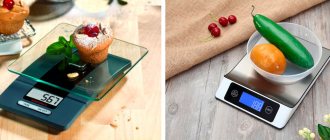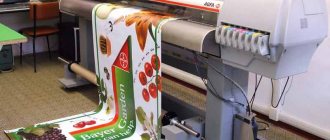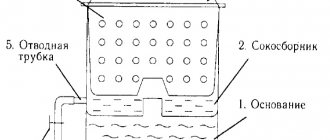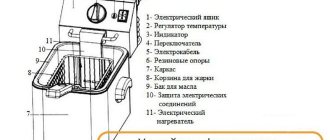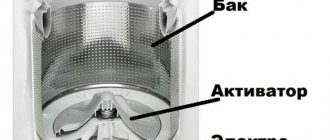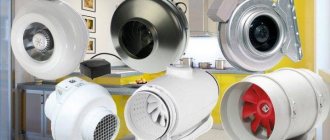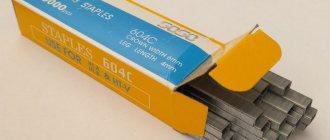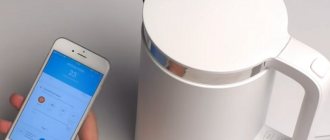What is a plotter and what is it used for?
Before you begin to review the equipment, you need to understand its purpose. Basically, a plotter refers to a printing device. Essentially, it is an analogue of a printer, but more advanced. The plotter device allows you to perform large-format printing, create drawings, 3D postcards, advertising signs and other products. If the printer prints only on paper, then the media can be cardboard, fabric, film and other synthetic materials. There are special models, the device of which allows you to apply an image to T-shirts, other light clothing and even round objects, such as cups.
A plotter is similar to a printer, but has advanced functions.
Initially, the equipment was intended only for printing. Over time, his device was improved. Now this concept refers to machines that can not only print, but also cut out shapes from the media.
History of the creation of the plotter
In various sources there is equipment called a plotter. These are the plotters that were originally named that way. The machines were intended for drawing diagrams, tables, maps and other graphic images on large format media.
Initially, plotters were designed for printing graphic images on large media formats
Plotters appeared with the beginning of the development of computerization. In 1959, the first Calcomp 565 model went on sale. The device moved paper along its axis with wheels. Drawing was carried out with a writing pen.
Calcomp 565 was replaced by an improved Computervision's Interact I plotter. The equipment was equipped with an auto-design system. The drawing element was replaced with a ballpoint pen. The advantage of the equipment was high image accuracy. Over time, the manufacturer modernized it. It became possible to apply colored designs using multi-colored feathers.
High-resolution tablet models appeared in 1970. The equipment was produced by manufacturers HP and Tektronix. The electronic devices were the size of a table.
A modern plotter is a multifunctional device
A modern plotter is a device used for bright, colorful, high-resolution printing. Many models have large RAM and hard drive. An additional cutting function has appeared. Drawing blocks have been improved, allowing the medium to use not only paper, but also other materials.
A little history
The very first plotters appeared in 1959. The pioneer in this field was Calcomp, and the first model was called Calcomp 565. Essentially, the device was an automated pantograph that was controlled using a computer program. Area of application: constructing simple figures and graphs. Movement along the X coordinate occurred due to the movement of the paper, and the Y axis was formed using the movement of the graphic pen itself. Naturally, the device required large areas to operate.
In the 70s, Hewlett Packard and Tektronix managed to design more compact models of plotters that did not exceed the dimensions of a regular office desk. Although it was possible to significantly reduce the overall dimensions, the dot technology was still based on the movement of the graphic pen. A little later, with the advent of the first inkjet and laser printing technologies, such plotters turned out to be almost completely useless.
A modern plotter is a stand-alone device with a powerful processor, its own memory and a whole set of tools for precise positioning and detailed graphics creation. Essentially, it is now a small computer with large format printing capabilities . And it is most often used for printing banners, large drawings, and advertising posters. That is, it will be very expensive to print reports or abstracts on it.
What is the working principle of a plotter
The work of the first plotters was to move the paper medium along the X coordinate. The movement of the drawing pen occurred along the Y coordinate. Equipment with a ballpoint pen was controlled by a computer. Modern plotters operate via a connection to a computer port, SCSI interface and Ethernet. Advanced devices have their own built-in buffer and control display. For control, there are special programs where the operator develops an image and sets parameters. When the project is ready, it is sent for printing. The device receives the signal and begins to perform the task exactly according to the program.
Principle of operation
Plotters create images using a pen (writing block).
The plotter communicates with a PC using a serial port, parallel port, $SCSI$ interface and Ethernet. Some plotter models have a built-in buffer (from $1$ MB).
The principle of operation of the first plotters was to move the paper using a roller, which provided the $X$ coordinate, and $Y$ provided the movement of the pen.
Later plotters were controlled by a computer and had a ballpoint pen for drawing. With this approach, increased accuracy of pen positioning and, accordingly, the accuracy of the drawing itself, which was applied to the paper, became available. The modernized plotters were supplemented with a special cassette holder, which could be arranged with pens of different thicknesses and colors.
Are you an expert in this subject area? We invite you to become the author of the Directory Working Conditions
Note 1
At the end of the $1970s. Hewlett Packard and Tektronix have developed tablet plotters with the dimensions of a standard desktop. In the $1980s. A smaller and lighter $HP$7470$ model was introduced, which used innovative "grain wheel" technology to move paper. These consumer-grade plotters have become popular in business applications. With the development of computer technology, pen plotters have practically disappeared from use.
Main types of plotters and their characteristics
There are three types of equipment that differ in functionality: cutting, printing and combined plotters. The third option is of great interest. Such devices are often called hybrids. You may come across the name plotter-cutter. The advantage is that you can cut and print images on a plotter. There is no need to purchase two expensive devices.
Important! A hybrid plotter is indispensable in the production of stickers and other similar products where it is necessary to apply an image and cut it along a certain contour.
If we talk about the main varieties, then there are two groups of plotters: cutting and printing. Each device performs only one specific function.
Cutting plotters
From the name of the device one can already judge that it is intended only for cutting media. The plotter is equipped with a knife that, according to a trajectory specified by the program, cuts out a fragment, a complex pattern, and even text.
The cutting apparatus is equipped with a knife instead of a printing unit
Essentially, a cutting plotter is a cutting machine. Select a device according to its characteristics. First of all, the format is taken into account, which determines what size media can be used. Cutting speed affects productivity. The pressure of the knife and the type of cutter determines what material the carrier can be used from, for example, film, cardboard.
Attention! An important feature for a cutting plotter is the presence of an optical sensor. The positioning device ensures cutting accuracy. The knife does not extend beyond the marked boundaries of the cutting lines.
Printing plotters
Printing equipment can only apply an image to a medium. The design of the devices is different. Instead of a knife, the working unit is a drawing block. The method of applying the image depends on the printing technology.
Printing devices are only capable of printing an image onto a medium
To use the plotter for its intended purpose, you need to choose the right device taking into account its characteristics. Printing speed, as in the previous device, affects performance. Resolution is responsible for the clarity of the image at certain sizes. The format determines what size media can be used and what size the image will be. The color rendering parameter affects the brightness and saturation of the picture. Such plotters are needed in the production of advertising products. For drawing graphic images, color rendering quality is not particularly important.
Advice! A high-speed printing machine is needed to produce large quantities of products.
Types of plotters according to the method of sheet placement
The carrier for the equipment is paper, cardboard, film, synthetic fabric and other materials. They come in the form of sheets or rolls. Each type of plotter is designed to feed a specific media, which determines its design.
Flatbed plotters
The design of tablet-type equipment is similar in functionality to a printer. The technique only works with sheet media. It is fixedly fixed on the table using magnetic, electrical or mechanical fixation.
The design of flatbed models includes a large table for sheets of media
Tablet devices are usually used to print images in A2 and A3 formats. The disadvantage is the large size due to the presence of the table. Because of this, tablet-type devices are not very popular. This technique is in demand when printing advertising signs of huge sizes.
Roll plotter
A special feature of roll equipment is its compactness. The media is wound into a roll of a certain thickness. The feed occurs along the drum, where, during the movement, the drawing block applies the image.
The design of roll models allows the use of long media wound on a roll with compact equipment sizes
The device requires little space. Roll models save consumables and have better print quality. The devices also win in terms of functionality. Their device allows you to perform a greater number of tasks.
Main characteristics of plotters
The main characteristics of the plotter include the media format, the size of the drawing area, the drawing speed, the amount of built-in memory, and the accuracy of the image. The main parameters of the plotter are the printing speed or the speed of paper movement. These parameters depend on what interface the plotter has.
Types of plotters
According to their design features, plotters are divided into:
- roll;
- tablet
Flatbeds are used mainly for printing images on A2 and A3 paper. To secure the paper, the plotter uses magnetic, electrical or mechanical fixation. The graphics are constructed as follows: the pen starts drawing from the starting position and reproduces the drawing to the end point.
Roll plotters are used for printing on large formats - A0 or A1. Why is it called roll? Because the paper on which the design will be applied is secured in the form of a roll. When the plotter reaches the final drawing point, the paper is cut and the finished image is produced.
Based on the type of writing block, there are plotters that contain the following blocks:
- jet;
- laser;
- electrostatic;
- direct output;
- feather
For example, if the pen block is based on a feather or several multi-colored feathers, then the direct image output block reproduces the drawing by heating special thermal paper. The paper changes color where it is heated depending on the amount of heat transferred by the plotter.
There are also cutting plotters. In other words, boats. They are used in advertising agencies due to their ability to cut letters or shapes of any complexity from paper. With its help, you can easily produce self-adhesive film, cardboard layouts or advertising text.
What types of plotters are there by type of drawing block?
A special feature of printing machines is the presence of a drawing block. The printing technology depends on its device. Each drawing block is capable of working with a specific type of media.
Pen plotters
The writing head of the equipment has a device in the form of pens. This is where the name came from. During operation, the pen moves in two directions. The devices are considered to be of the vector type and come in two types: some draw with liquid paints, others apply the image with slate pens.
Pen models are vector-type devices
The head is driven by a motor, which creates a certain level of noise. The advantage of a pen device is high print quality, contrast and good color rendering. Disadvantage: low printing speed.
Inkjet plotters
In terms of printing technology, the devices resemble ordinary household inkjet printers. The picture is applied with liquid paints sprayed from the nozzle of the writing head. Most models work with 4 base colors. Other shades are obtained by mixing paints.
Most inkjet plotters work with 4 basic ink colors
The jet head is equipped with a large number of nozzles. During printing, they heat up, due to which an air-filled bubble is formed, which, under pressure, squeezes the ink onto the media. The advantage is simple operation of the plotter, high productivity, clear pictures, and affordable prices for consumables.
Electrostatic plotters
This category includes devices that apply an invisible image with charged particles onto a special medium. Liquid ink sticks to them and is finally fixed by drying.
Equipment with electrostatic printing technology is sensitive to room temperature and humidity
The advantage of plotters is the high speed of drawing. However, electrostatic devices can operate properly if the room is maintained at the manufacturer's recommended humidity level and air temperature.
Important! Electrostatic models are expensive and difficult to maintain.
Laser and LED plotters
The design of equipment in this category resembles laser printers. First, the head applies an invisible image to the media using a beam. Dry powdered paint - toner - sticks to the charged particles. Once heated and passed through the media drum, the ink is baked into a permanent image.
The writing head of the laser device has a long service life, since the possibility of paint drying on it is eliminated
The advantage of laser and LED devices is high performance. Due to the high resolution, clear images are obtained. The downside is the high cost of the equipment.
Direct image plotters
Printing technology is based on the use of thermal paper. The media passes through a special head - a comb. It is equipped with many heaters. Depending on the heating temperature, a certain color of each point of the pattern appears on the media.
Models with direct image output technology print on thermal paper
The peculiarity is that the mechanism of operation of plotters for direct image output during monochrome printing allows you to obtain a high-quality image with good clarity. The equipment is more in demand by engineering organizations for drawing up projects.
Thermal feed plotters
The printing technology and writing head design are similar to those of models with direct image output. The carrier is thermal paper, but between it and the comb there is a special film called a color donor.
Thermal feed machines print beautiful color images
During printing, the head passes over the media the required number of times. Warming up at a certain temperature, the donor leaves the desired color on thermal paper. Printed products do not fade from UV rays and are resistant to moisture.
How to use a plotter
To work, you will need special software. It comes with the device. If the basic program is not satisfactory, you can use third-party software. To print on a plotter, you need to do the following:
- create a pre-prepared file in the program or find it on the computer;
- click the “Print” command in the menu;
- in the equipment line, find the plotter connected to the computer, click the “Properties” command;
- set the parameters in the menu that appears, click the “Ok” command;
- First, a preview of the picture will appear, and if everything is satisfactory, give the “Print” command.
The nuances of operation may vary depending on the installed operating system and the programs used.
You can use a plotter for cutting in a similar way, but there are a lot of nuances. First, the device is tested on unnecessary media, so as not to spoil the material, for example, with color pictures for cutting.
The cutting device must be tested before use.
After submitting the “Properties” command, in the settings you set the pressure on the knife and the length of its extension, which depends on the media used. Next comes the image preview and the “Print” command.
All cutting type plotters cannot automatically adjust to the media type. The operator must do everything himself. It is important to check the sharpness of the knife, the accuracy of the constructed image, and place a substrate with good adhesive properties under the media so that the material does not move during cutting.
The video contains interesting information about the plotter:
Types of plotters
There are several classifications of plotters, according to one of which they are divided into:
- pen, inkjet and electrostatic;
- roll and flatbed;
- vector and raster.
Plotters can be classified according to the following parameters:
- according to the method of generating a drawing, they are divided into plotters with random scanning and raster;
- according to the method of moving the media - flatbed, drum and mixed (friction, with an abrasive head);
- according to the tool used (type of drawing head) - pen, photo plotters, with a scribing head, with a milling head.
Finished works on a similar topic
Coursework Plotter 420 ₽ Abstract Plotter 280 ₽ Test paper Plotter 200 ₽
Receive completed work or specialist advice on your educational project Find out the cost
Setting up and installing the plotter
Before you start, you need to configure the plotter, and if it is being used for the first time, installation is required. The manufacturer supplies its device with an installation disk. It usually contains instructions, drivers, and software. To install, you need to load the disc into the drive and follow the pop-up prompts. If for some reason the disk is not available, everything can be downloaded online from the manufacturer’s website. After installing the software, click the “Devices” button in the Start menu. The operating system must detect the device. In the “Printers and Faxes” line, double-click with the left button of the computer mouse. In the window that appears, set the required settings.
One of the popular programs for work is Corel Draw.
The settings you have made can be saved and used in the future. They are changed if necessary. After settings, the equipment is put into operation provided there is a ready file for printing or cutting. If it doesn’t exist, create it in Corel Draw, Plot Calc, Sign Cut or another similar program.
